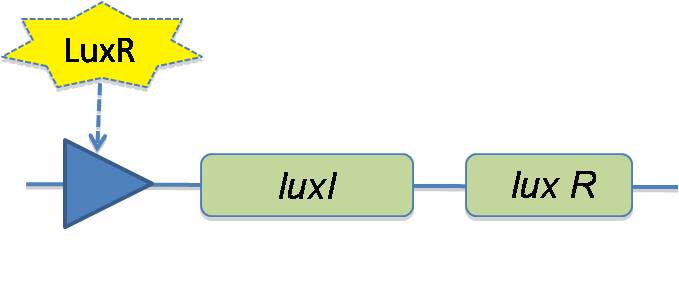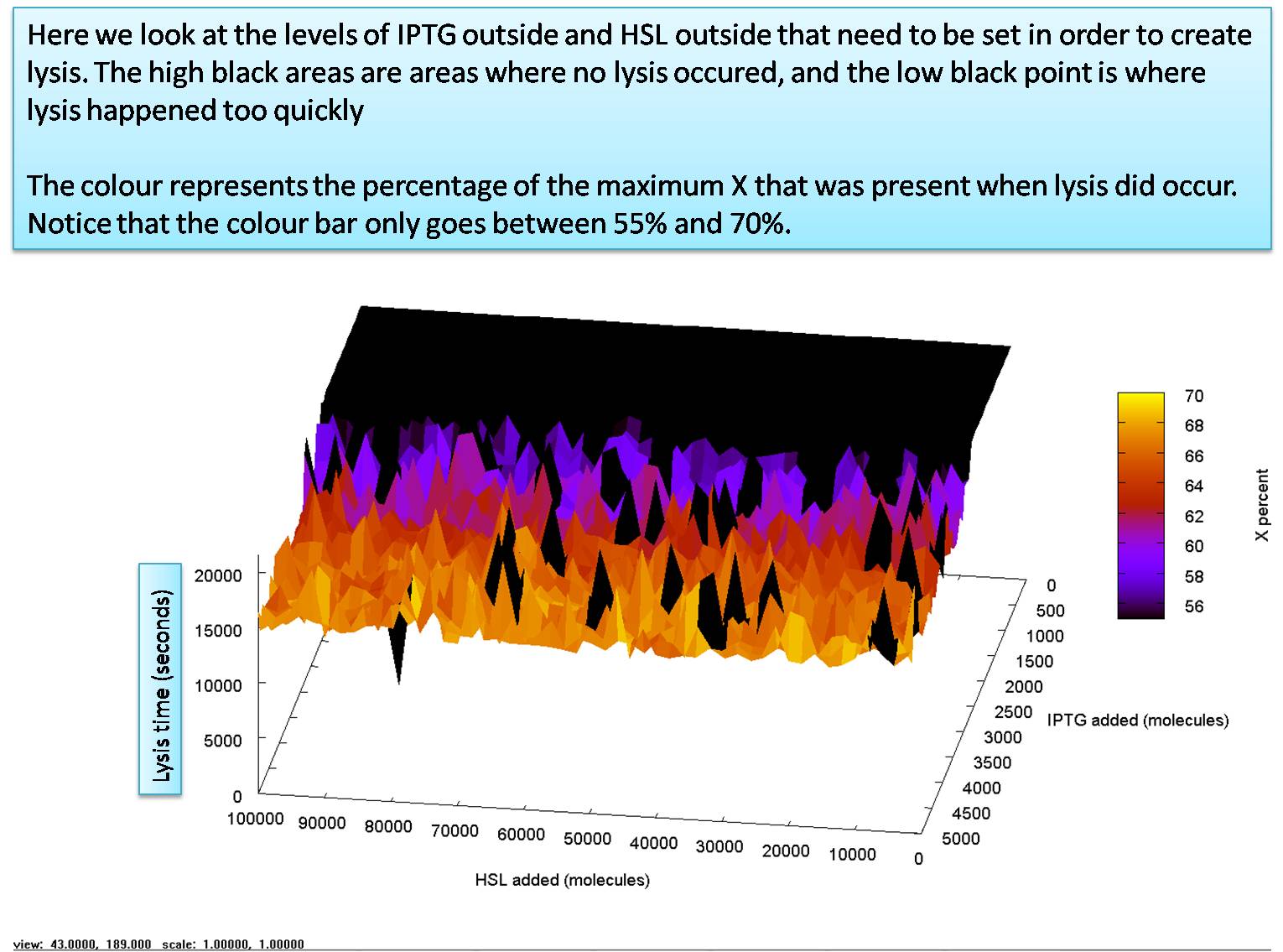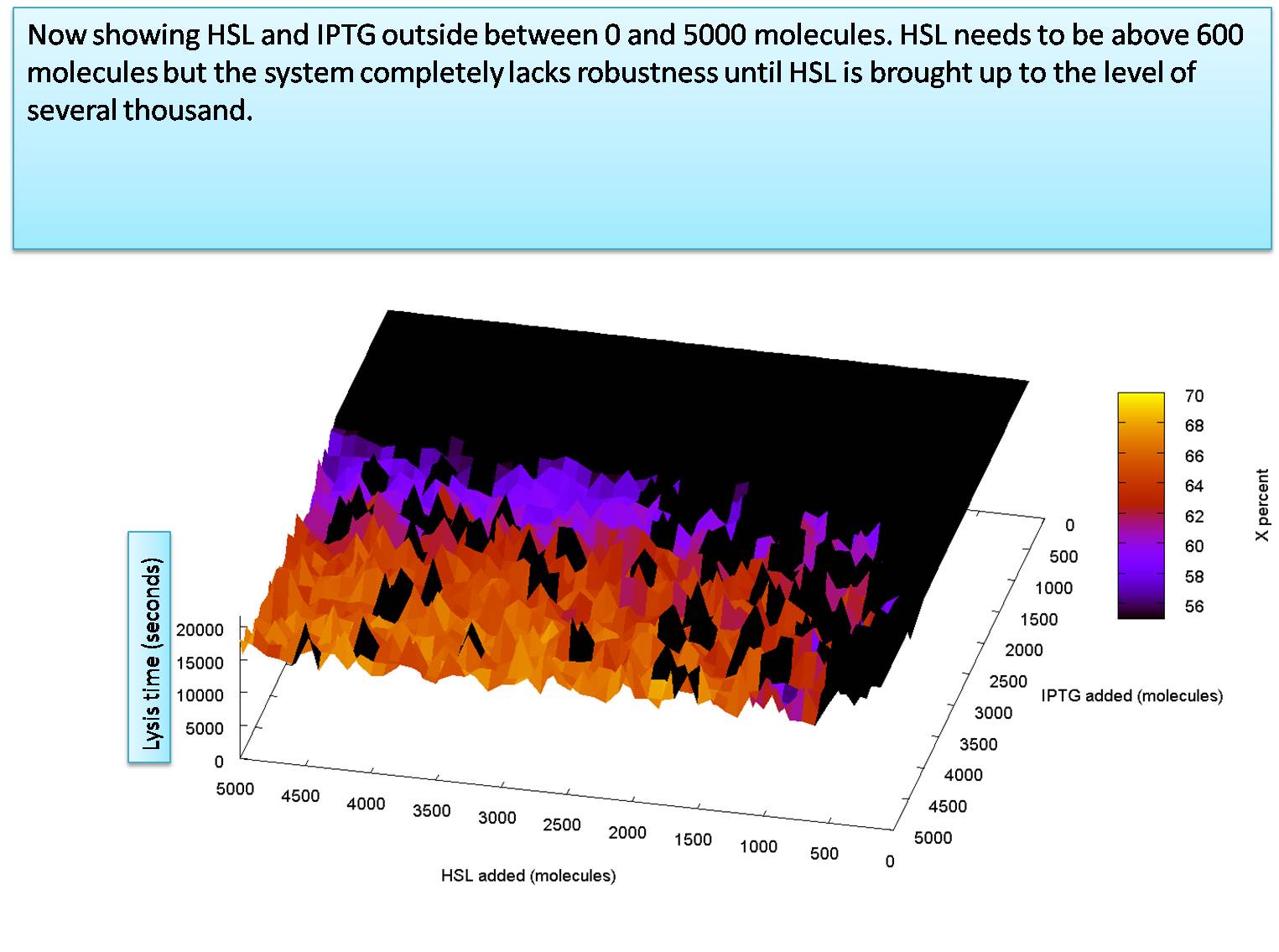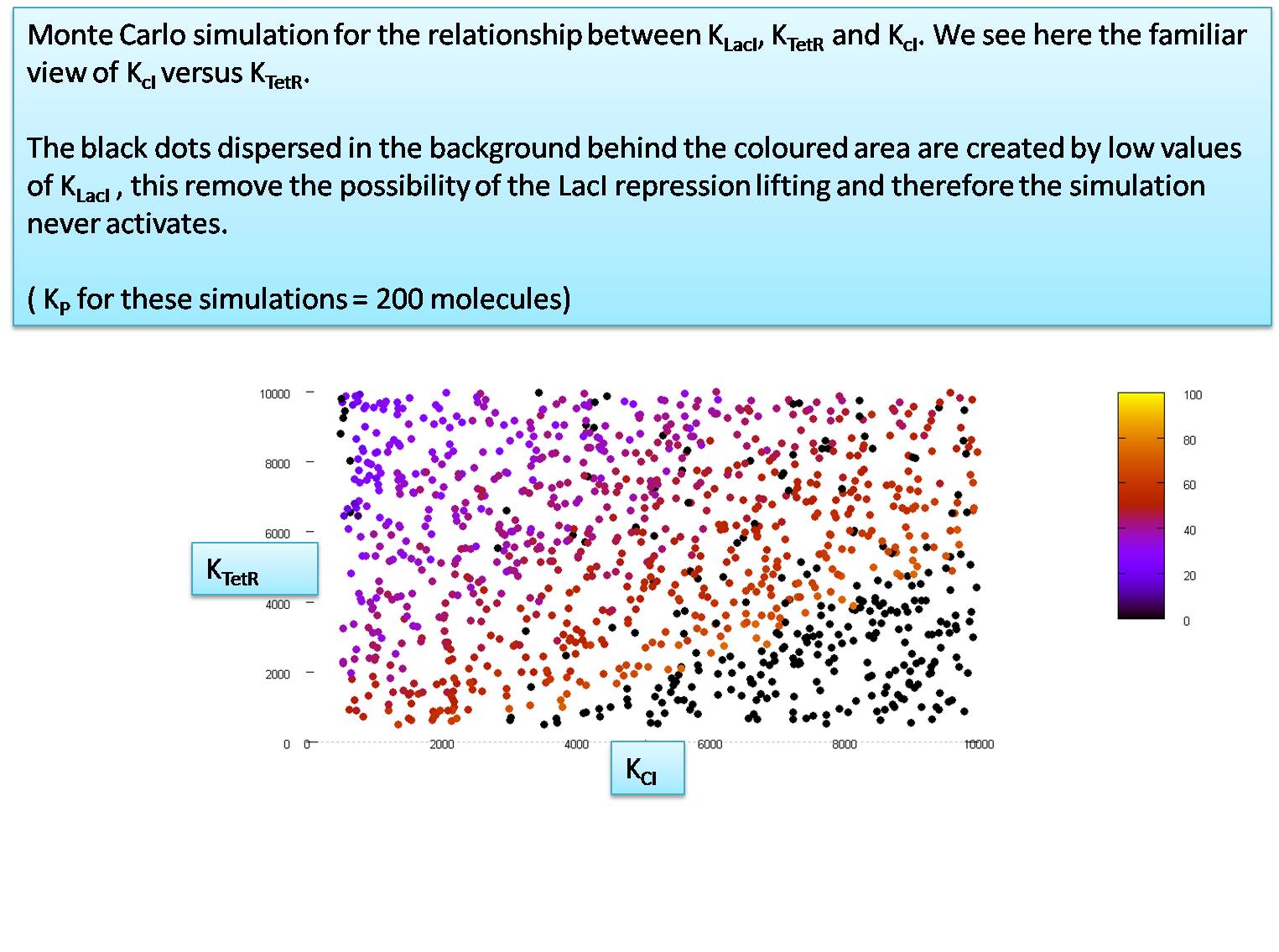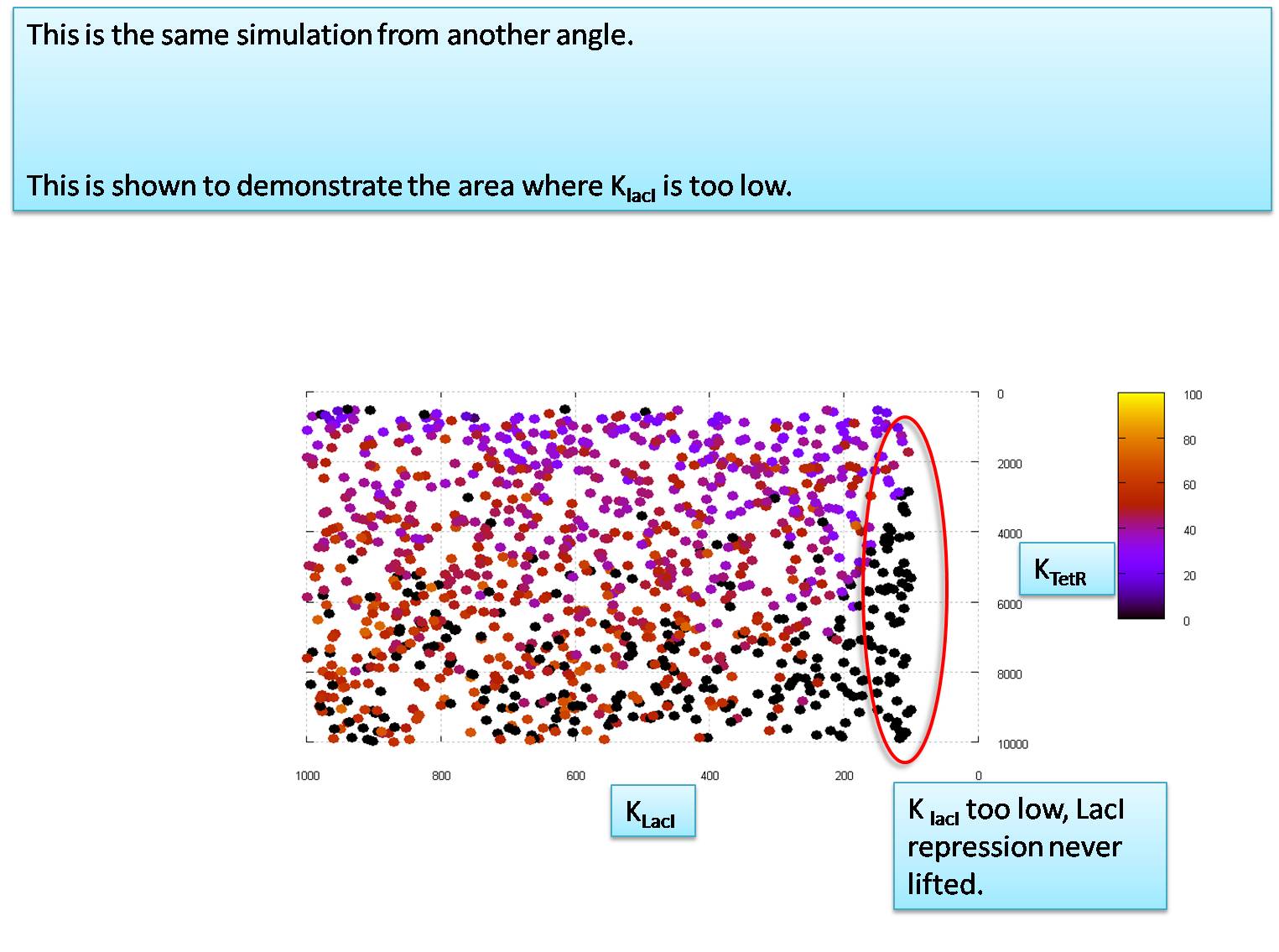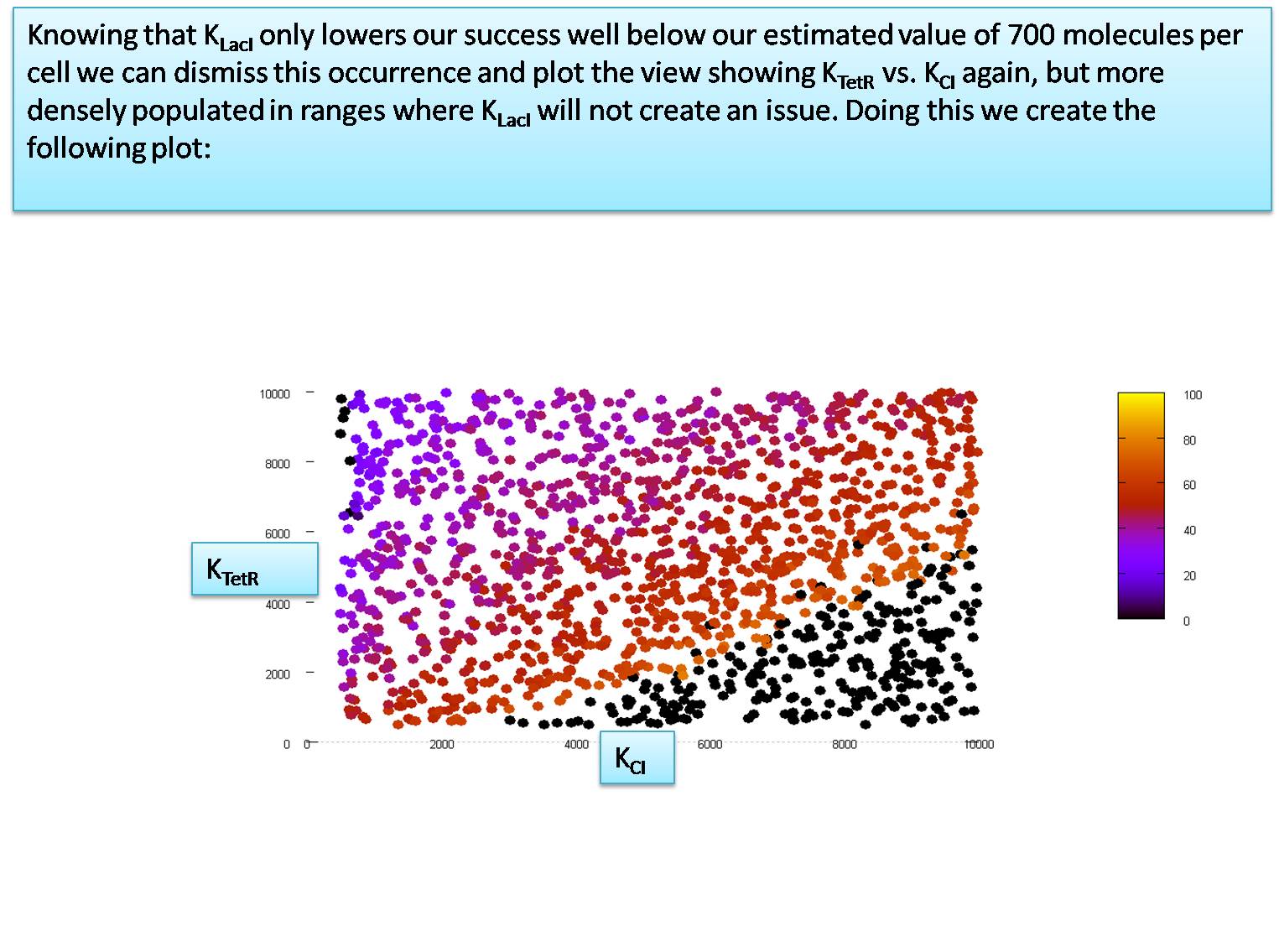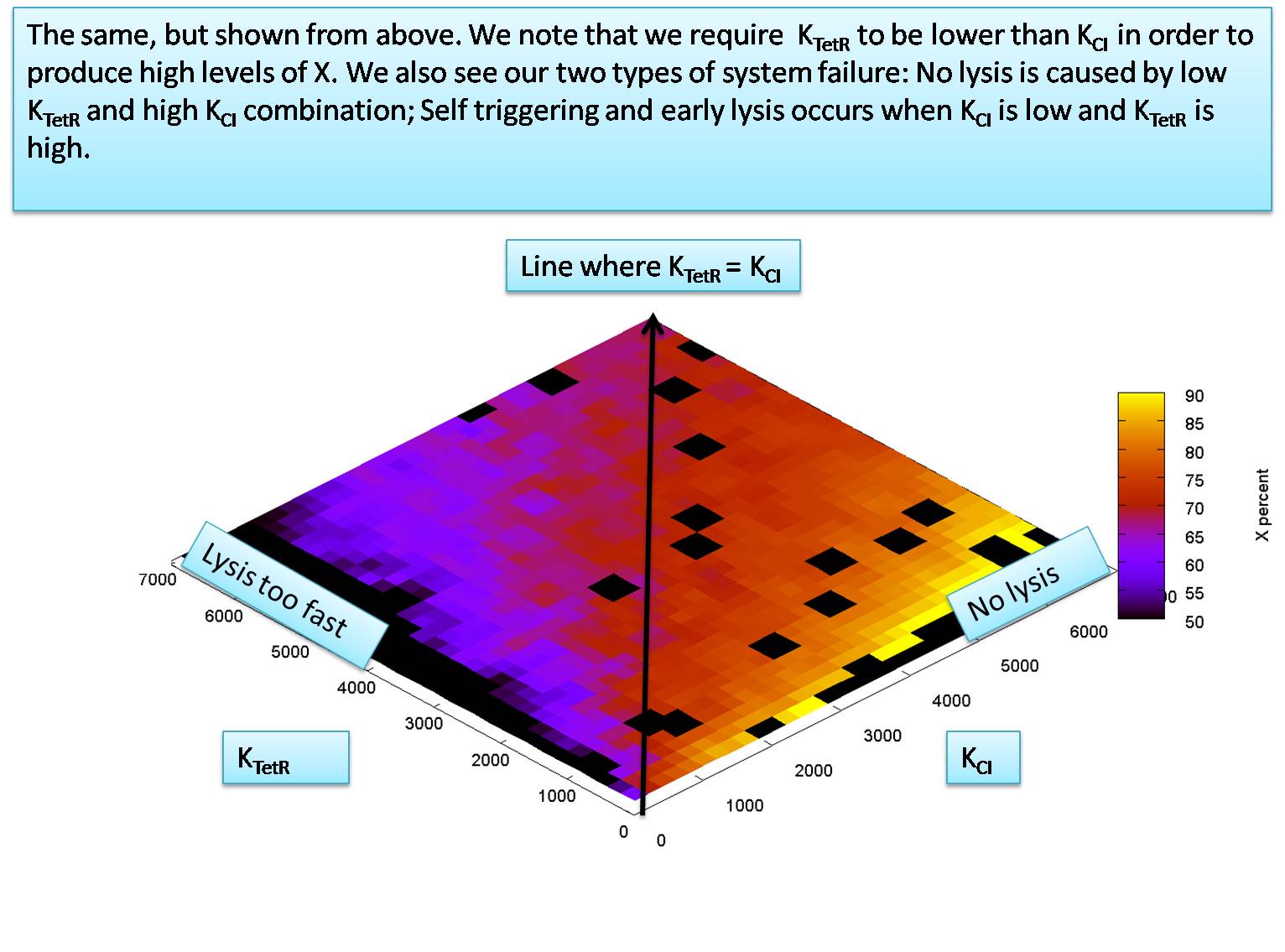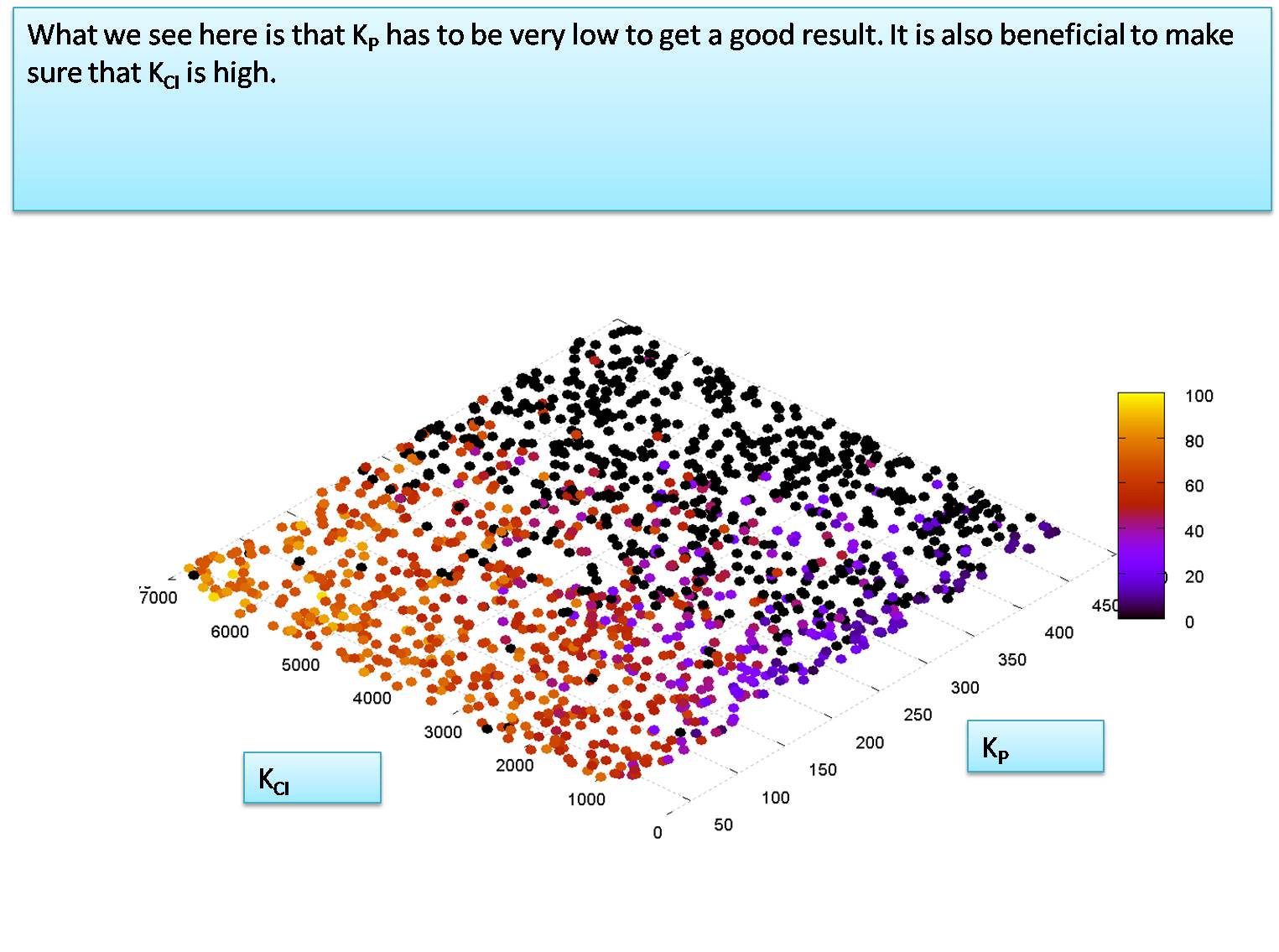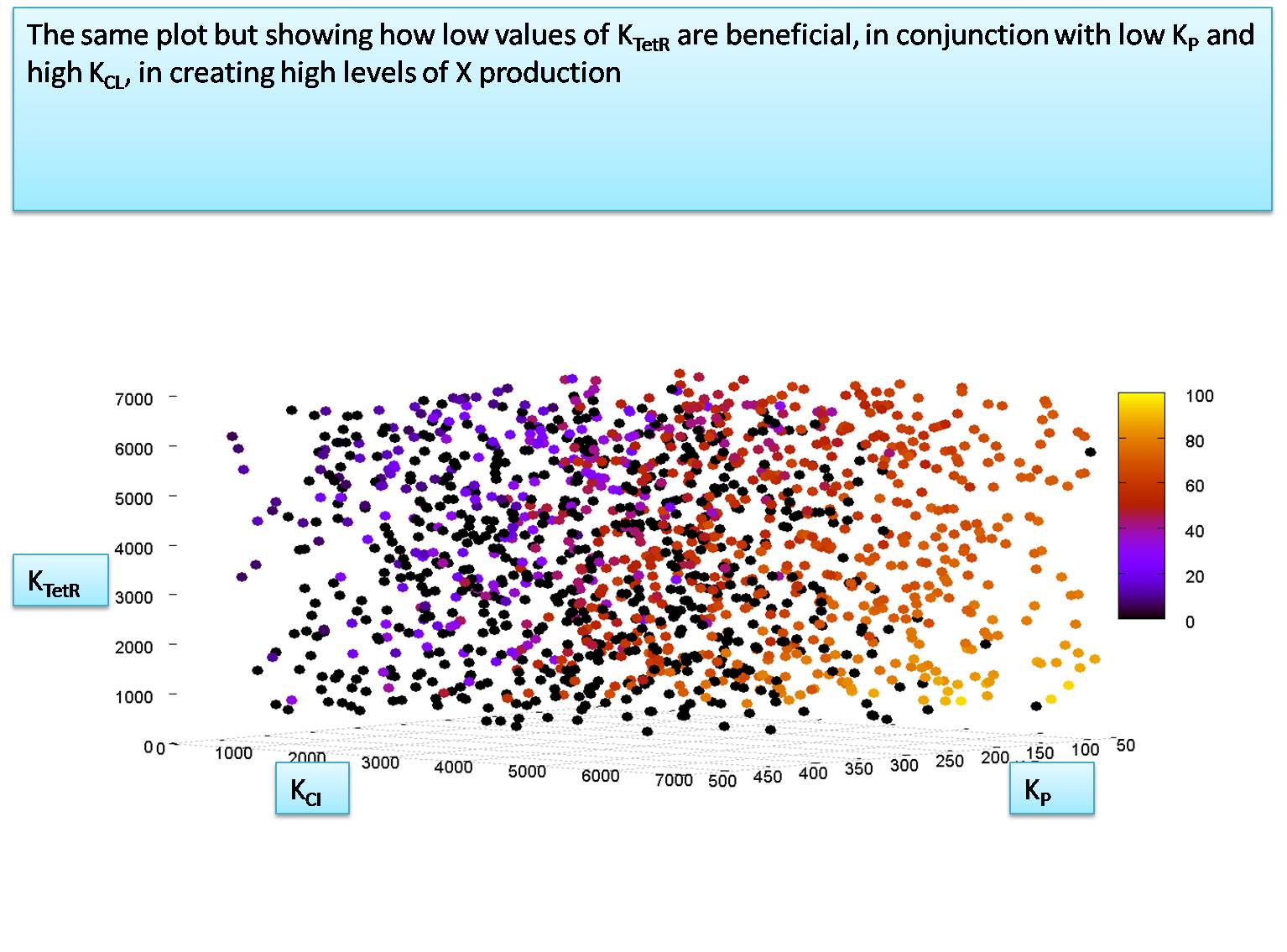Team:Aberdeen Scotland/parameters/invest 4
From 2009.igem.org
Nick Smart (Talk | contribs) |
Nick Smart (Talk | contribs) |
||
| Line 75: | Line 75: | ||
[[Image:Input Model Graph 9.jpg|center|700px]] | [[Image:Input Model Graph 9.jpg|center|700px]] | ||
| + | It seems that this model is a lot more intricate in nature, and also success is much harder to find. Also we note that X concentration never really gets above 80 percent of its maximum, and is usually a great deal lower. | ||
| + | |||
| + | |||
| + | |||
| + | {{:Team:Aberdeen_Scotland/break}} | ||
| + | |||
| + | = Relationship between K<sub>TetR</sub> K<sub>CI</sub> and K<sub>P</sub> = | ||
| + | |||
| + | K<sub>P</sub> plays a very important role in the success of the system. In essence K<sub>P</sub> has to be low, and the lower the better, as we see in the following Montecarlo simulations | ||
| + | |||
| + | [[Image:Input Model Graph 10.jpg|center|700px]] | ||
| + | |||
| + | [[Image:Input Model Graph 11.jpg|center|700px]] | ||
| + | |||
| + | The reason K<sub>P</sub> has to be so low is because in this system there is equal production of LuxR and LuxI. This production level is governed by a feedback loop but the minimal production must be low in order to stop the system triggering itself. As they are both expressed quite weakly it is hard to accululate a large quantity of the LuxR /HSL complex, P. As it is P that leads to the expression of the glue molecule X and CI and then K<sub>P</sub> must be low in order to express them to a large degree. | ||
| + | |||
| + | It is here that we find our first major flaw with the new model. The problem is that our assumption that K<sub>P</sub> can has to be as low as 200 molecules per cell is unrealistic. This means that while our first input, which is the lifting of LacI repression from IPGT induction works perfectly, our second input, the quorum sensing, fails at expressing the glue molecule X to a large degree. This means that we have to rethink, for a second time, our Quorum sensing system. This will be done in the next section “A rethink of Quorum sensing” but for now we will show some graphs of protein concentrations demonstrating the problem. | ||
| + | |||
| + | |||
| + | {{:Team:Aberdeen_Scotland/break}} | ||
{{:Team:Aberdeen_Scotland/footer}} | {{:Team:Aberdeen_Scotland/footer}} | ||
Revision as of 14:29, 7 August 2009
University of Aberdeen - Pico Plumber
Contents |
The input dependant model
For this model, we no longer assume a trivial process of repression of lacI being liften and QS being turned on. The LacI repression is now a repression / induction hill function with a Kd of 1200 molecules per cell for IPGT forming IPGT lacI complexes. We assume IPGT leaks into the cell from outside. We only set the outside concentration of IPGT. For quorum sensing all we set is an elevated HSL concentration outside which is free to defuse in. We now include a feedback loop into the QS mechanism. To do this we attach a lux box onto the plasmid for producing luxR and luxI, like so:
However, we are taking the production strengths of this lux box to be reduced in comparison to our lux box for producing X, Y and cI. The strengths are
Production max for X, Y and cI = 0.44 pops
taken from the iGEM page of ***** and personal communication with **** on ****
Production min for X Y and cI = 0.013 pops
taken from *****
Production max for QS feedback = 0.002 pops
Production min for QS feedback = 0.00015 pops
These values are taken from the paper “ FIOADAOIDFJAOFJASDIOJASOIJADOAJSDAFOJAFOAJSD”
An important new parameter is KP. This is the dissociation constant for “P” activating the lux boxes. P is the luxR/HSL complex . To take a break from the wordy descriptions we will now show some small sections of results for this model, which should be easily interpretable after following the section about the Monte Carlo analysis
Outside levels of IPGT and HSL required for success
The outside levels of IPGT and HSL are the only two assumptions we make in this model, let’s see what these assumptions need to be in order to achieve success
So we need about 6000 molecules of both HSL and IPGT for success... although this will depend on our 3 old Kd values of KLacI KTetR KcI and our new one of KP. (P is the luxR HSL complex activating the lux boxes)
For this experiment the Kd values are
KLacI = 700 molecules per cell
KcI = 5000 molecules per cell
KtetR = 3000 molecules per cell
KP = 200 molecules per cell
For now we will take our outside levels of IPGT and HSL to be 10,000 molecules. Although we have not yet calculated physically appropriate values yet.
New relation between KTetR and KcI and KLacI
We studied this relationship in the simplified input model. Let’s now look at it again for the new input dependant one
Knowing that the relationship between success with KLacI is quite uninteresting, our next plot will let us find another way of viewing the relationship between success, K TetR and KCI, and use our 4th dimension more cleverly
It seems that this model is a lot more intricate in nature, and also success is much harder to find. Also we note that X concentration never really gets above 80 percent of its maximum, and is usually a great deal lower.
Relationship between KTetR KCI and KP
KP plays a very important role in the success of the system. In essence KP has to be low, and the lower the better, as we see in the following Montecarlo simulations
The reason KP has to be so low is because in this system there is equal production of LuxR and LuxI. This production level is governed by a feedback loop but the minimal production must be low in order to stop the system triggering itself. As they are both expressed quite weakly it is hard to accululate a large quantity of the LuxR /HSL complex, P. As it is P that leads to the expression of the glue molecule X and CI and then KP must be low in order to express them to a large degree.
It is here that we find our first major flaw with the new model. The problem is that our assumption that KP can has to be as low as 200 molecules per cell is unrealistic. This means that while our first input, which is the lifting of LacI repression from IPGT induction works perfectly, our second input, the quorum sensing, fails at expressing the glue molecule X to a large degree. This means that we have to rethink, for a second time, our Quorum sensing system. This will be done in the next section “A rethink of Quorum sensing” but for now we will show some graphs of protein concentrations demonstrating the problem.
 "
"
